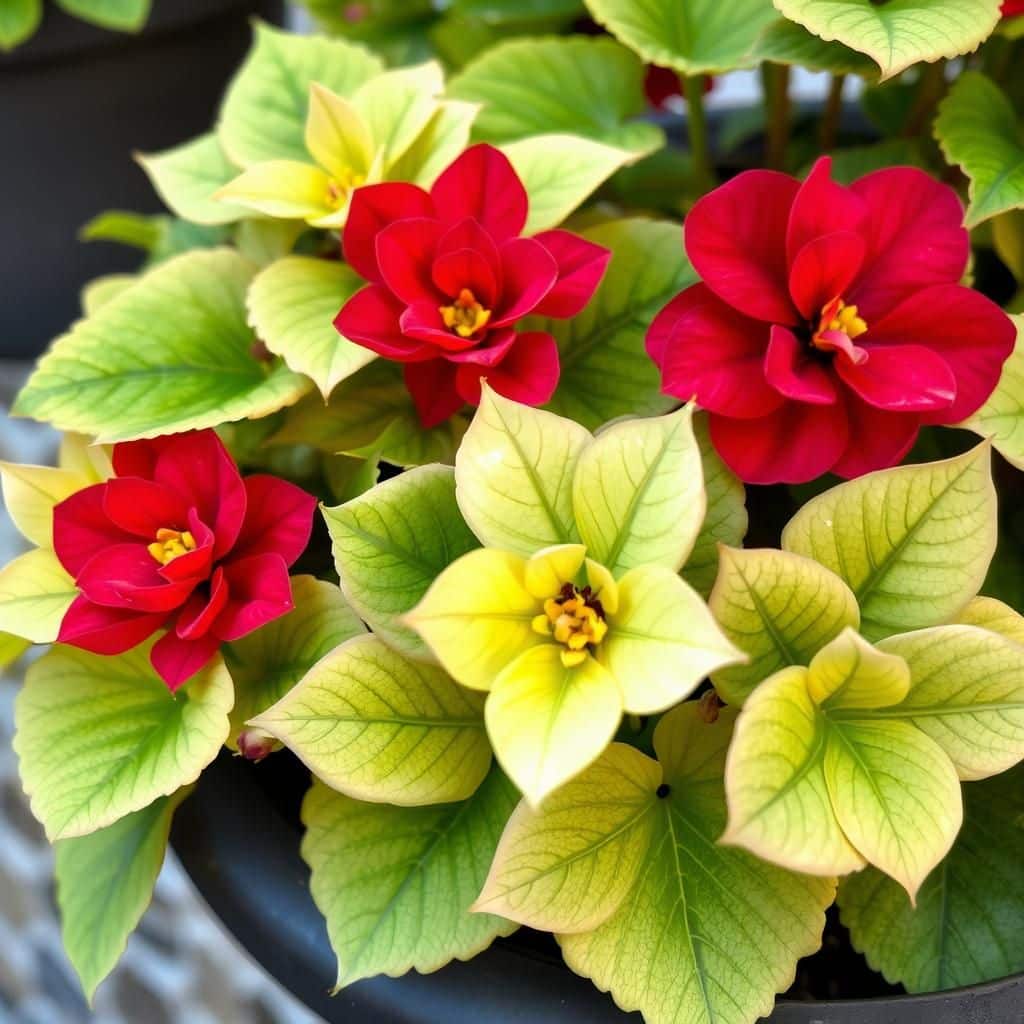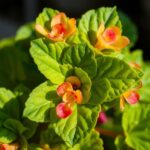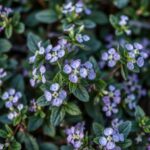Where is the Best Place to Put Begonias? Tips for Ideal Begonia Placement

When it comes to cultivating beautiful begonias, location is key to their thriving growth. These vibrant plants, known for their stunning flowers and lush foliage, require specific conditions to flourish. Understanding where to place begonias can significantly impact their health and aesthetics. In this article, we will explore the best locations for positioning begonias, considering factors such as sunlight, temperature, and humidity. Whether you're planting outdoors in a garden or indoors in a bright living space, following these tips will help you create the perfect environment for your begonias, ensuring they reach their full potential and brighten your surroundings.
Optimal Locations for Growing Begonias
When it comes to placing begonias, choosing the right location is crucial for their health and vigor. Begonias thrive in areas with indirect sunlight or partial shade, as too much direct sunlight can scorch their leaves. A spot with warmth and humidity, such as near a window with filtered light or under tall plants, allows them to flourish. It’s also important to avoid cold drafts and ensure that the soil is well-draining to prevent root rot. This optimal environment will enhance their growth and ensure vibrant blooms throughout the growing season.
Light Conditions
Begonias prefer indirect light or partial shade for optimal growth. Too much direct sunlight can lead to leaf burn, while too little light can hinder their blooming potential. Ideally, placing begonias in a spot where they receive morning sunlight but are shielded from the harsher afternoon rays can promote healthy growth. This allows them to benefit from sufficient light without damaging their leaves.
Humidity Requirements
Given their tropical origins, begonias thrive in humid environments. To mimic their natural habitat, it is suggested to place them in areas with higher humidity levels, such as bathrooms with natural light or kitchens. Additionally, using a humidifier or placing a tray of water near the plants can help maintain adequate moisture around them, encouraging lush foliage and vibrant flowers.
Temperature Preferences
When selecting a location for your begonias, consider their love for warmth. They thrive in temperatures ranging between 60°F and 75°F (16°C to 24°C). Exposure to temperatures below 50°F (10°C) can stress them and stunt their growth. Thus, it’s vital to choose a location that is protected from cold drafts and sudden temperature changes to keep them healthy.
See also:
Soil and Drainage
Begonias necessitate well-draining soil to prevent root rot. Therefore, selecting a location where the soil retains some moisture yet drains excess water is essential. A pot with drainage holes filled with a lightweight potting mix, often containing peat moss, vermiculite, or perlite, will provide an excellent environment for begonias to thrive unhindered by excessive moisture.
Indoor vs. Outdoor Placement
While begonias can be grown both indoors and outdoors, the choice largely depends on your climate. In regions with mild winters, outdoor placement in a sheltered spot can be effective. For those in colder climates, begonias are better suited for indoor areas where they can receive adequate light and humidity without the risks posed by lower outdoor temperatures. It’s essential to consider seasonal changes that may necessitate moving them indoors.
| Location | Light Requirement | Humidity | Temperature |
|---|---|---|---|
| Indoors near a window | Indirect sunlight | High humidity | 60°F - 75°F (16°C - 24°C) |
| Outdoors in partial shade | Filtered morning light | Moderate humidity | Above 50°F (10°C) |
| Bathrooms | Indirect light | High humidity | 60°F - 75°F (16°C - 24°C) |
Essential Factors for Optimal Begonia Placement
Finding the perfect location for your begonias involves considering several essential factors that can significantly influence their growth and vitality. Begonias thrive in moderate temperatures and indirect sunlight, making them ideal for shaded areas or environments with filtered light. It's crucial to avoid exposing them to harsh afternoon sun, as it can lead to leaf scorching. Additionally, ensure that the environment is well-drained to prevent root rot, as begonias do not tolerate soggy soil conditions. Regularly monitor humidity levels, as these plants prefer a slightly humid atmosphere, striking a balance between illumination and moisture will support robust growth and vibrant blooms.
Understanding Light Requirements
Different types of begonias have varying light requirements. Most prefer bright, indirect light, which mimics their natural habitat. While some leafy types can tolerate lower light conditions, flowering begonias need more light to bloom effectively. Placing them near a window with filtered light or in a shady spot outdoors can enhance their growth while protecting them from direct sun, which can lead to leaf burn and hinder their development.
Optimal Temperature Conditions
Begonias flourish best in temperatures ranging from 60°F to 75°F (15°C to 24°C). They are sensitive to cold drafts and extreme temperature fluctuations, which can cause stress and result in drooping or loss of leaves. During winter, it's advisable to keep them in an environment that maintains temperature stability, avoiding exposure to frost and placing them away from heating vents or drafty windows.
See also:
Humidity Considerations for Begonias
Humidity plays a vital role in the health of begonias. They thrive in humid conditions; therefore, maintaining ideal humidity levels between 40% and 60% is beneficial. If the air is too dry, especially in winter months, consider using a humidifier or placing a tray of water with pebbles beneath the pots to increase moisture around the plants. Regular misting can also be helpful, but it is essential to avoid letting water sit on the leaves to prevent fungal diseases.
Choosing the Right Potting Mix
Using a well-draining potting mix is crucial for healthy begonia growth. A blend designed for houseplants or a mix of peat moss, perlite, and pine bark can provide the right balance of aeration and retention. Proper drainage is key to preventing root rot, and using pots with drainage holes helps control excess moisture. Additionally, repotting every few years is recommended to refresh the soil and provide the plant with needed nutrients.
Inspecting Drainage and Soil Moisture
Regularly inspecting the drainage of your begonia pots and the moisture level in the soil is essential for their health. Begonias dislike standing water, so ensuring that pots have proper drainage is vital. Before watering, check the top inch of soil; if it feels dry, it's time to water. Be cautious of over-watering, leading to root diseases while also ensuring they receive adequate moisture during warmer months, as this can promote healthy growth and vibrant flowers.
Questions from Our Readers
Where is the best place to put begonias indoors?
Begonias thrive in bright, indirect light, making it essential to place them near windows that filter sunlight. Avoid direct sunlight as it can cause leaf burn. Additionally, maintaining a consistently warm temperature and high humidity can help your begonias flourish indoors.
Are begonias better suited for indoors or outdoors?
Begonias can be grown both indoors and outdoors, but the best choice depends on your climate. In warmer areas, they often do well in outdoor shaded spots, while indoors, they benefit from controlled environments that protect them from harsh conditions.
See also:
What type of soil is best for begonias?
Begonias prefer well-draining potting mixes that retain some moisture without becoming soggy. A mix that includes peat moss or pine bark can provide the appropriate balance for healthy root development and prevent rot.
How often should I water my begonias?
Watering needs for begonias depend on the environment, but a general rule is to keep the soil slightly moist. Allow the top inch of soil to dry out before watering again. Overwatering can lead to root rot, so ensure proper drainage is in place.

If you want to read more articles like Where is the Best Place to Put Begonias? Tips for Ideal Begonia Placement, we recommend you check out our Plants category.
Leave a Reply
Related Articles